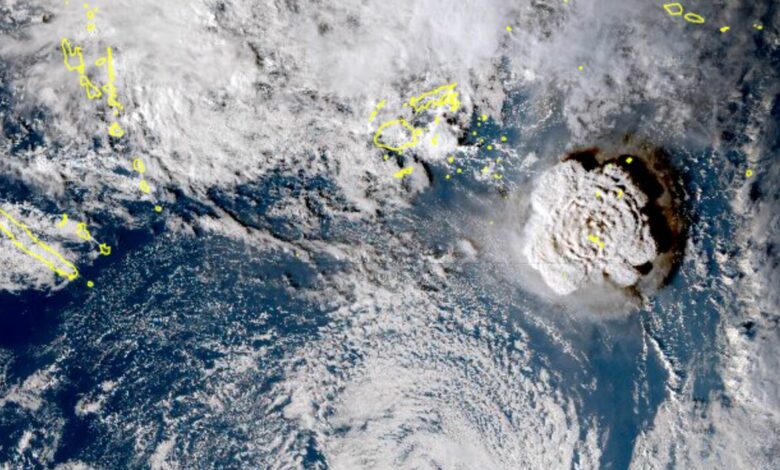
The beautiful and terrible majesty of our natural world was on full display Saturday.
A massive undersea volcano near the Pacific nation of Tonga erupted with such force that it prompted near-immediate tsunami warnings for Hawaii, Alaska, and the entire West Coast of the United States, all of which are situated more than 3,000 miles away (the latter two are more than 5,000 miles away). The National Weather Service canceled Hawaii’s warning several hours later but let the ones for Alaska and the West Coast stand.
Much more immediately concerning is the situation in Tonga, a Polynesian country situated about 1,500 miles to the north of New Zealand. The incident effectively knocked the nation offline, with an AP report suggesting it was because the cable from Fiji that supplies its internet was damaged. But dramatic footage captured by satellites and people on the ground points to severe impacts.
Some of the footage that’s out there is difficult to source given the communications breakdown that occurred when the volcano erupted. But the Tonga Geological Service’s Facebook page is sharing a steady stream of warnings and public notices discussing ongoing threats to public safety.
Satellite views of the incident, meanwhile, paint a clear picture of the eruption’s intensity. The blast was clearly visible from space, with multiple views from an assortment of satellites showing a massive plume of smoke and ash suddenly emerging from a cloud-covered Pacific Ocean.
The volcano, which is called Hunga Tonga-Hunga Ha’apai, is situated just under 20 miles off the coast of Tonga. The Jan. 15 eruption is actually the third in recent weeks, following a smaller blast on Jan. 13 and a more extended one that started on Dec. 20 and lasted for most of a week. During the first of those three eruptions, the volcanic island also grew larger.
Impacts in the U.S. have been less severe so far, but the existence of any impacts spanning so much distance speaks to the intensity of the explosion. Surging waves prompted evacuations and minor flooding in parts of California. The breadth of the tsunami warning alone is unusual for this type of event.
“We don’t issue an advisory for this length of coastline as we’ve done — I’m not sure when the last time was — but it really isn’t an everyday experience,” Dave Snider, tsunami warning coordinator for the National Tsunami Warning Center, told the AP.